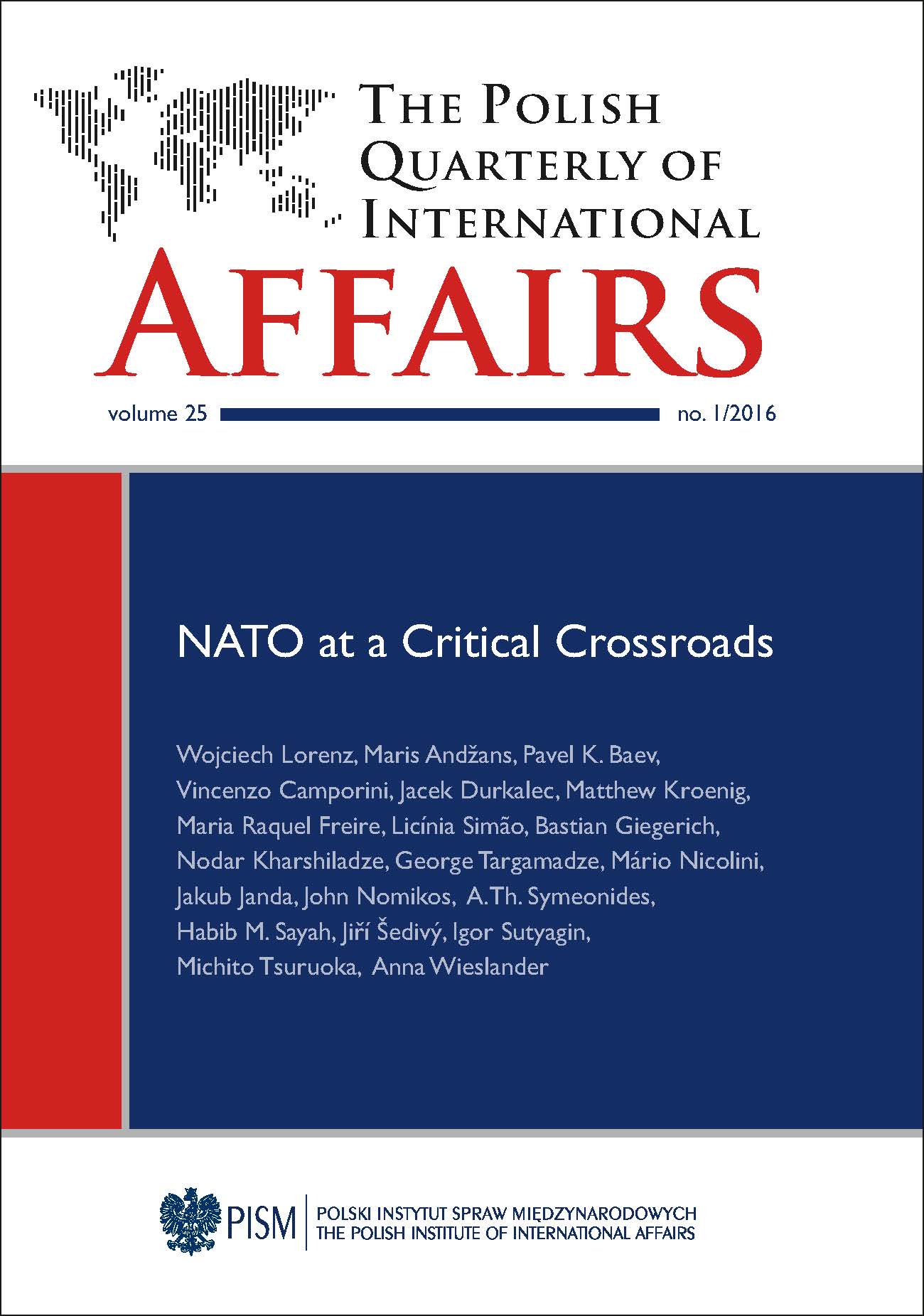Cohesion and Flexibility of NATO’s Response to Russia’s Problem
Cohesion and Flexibility of NATO’s Response to Russia’s Problem
Author(s): Pavel K. BaevSubject(s): Politics / Political Sciences, Politics, Security and defense, Military policy
Published by: PISM Polski Instytut Spraw Międzynarodowych
Keywords: NATO;Atlantic Alliance (NATO);Russia;
Summary/Abstract: The new strategic reality for the Atlantic Alliance is shaped not by the increase of instability and uncertainty, but by a very definite increase of direct military threats from a powerful and aggressive neighbour. This adversary perceives military power as the most effective, indeed the only, available instrument of policy, and has acquired new skills in applying it in both “hybrid” and traditional ways. Russia considers its readiness to deal with high security risks as an important political advantage, and is relentlessly exploiting every potential division in Western unity by seeking to undermine NATO’s ability to act in a timely and cohesive way. Moscow probes and targets strategic vulnerabilities in NATO’s security posture, and tries to maximise its particular positions of power. Besides the Baltic and the Black Sea theatres, Russia may in the near future attempt to utilise its strategic advantage in the Arctic, where it continues to increase military activities and infrastructure, despite the absence of any threats to its interests.
Journal: The Polish Quarterly of International Affairs
- Issue Year: 25/2016
- Issue No: 1
- Page Range: 22-30
- Page Count: 9
- Language: English

